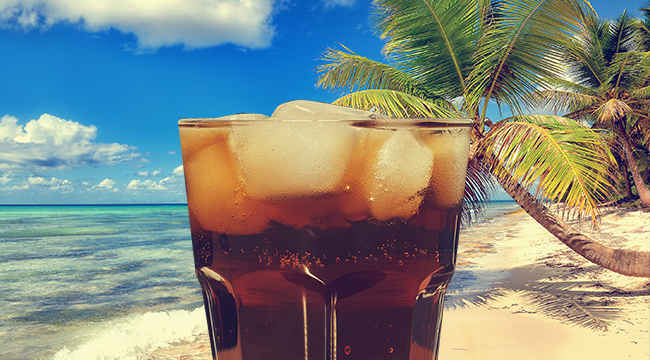
The next time you visit your favorite cocktail bar, take a look at the beverage menu. You’ll see a run-down of the various mixed drinks in the current rotation. There will inevitably be various ingredients you’ve never heard of (or if you have, you don’t really know what they are). Some of these include: orgeat, Charteuse, and Benedictine. But, one ingredient seems to stand out: Rhum. You wonder if they just spelled rum wrong, but you don’t mention it to anyone because you don’t want to look dumb.
Good thing, too. It’s not a misspelling — there is indeed a difference between rum and rhum:
Rum
Rum, as a general classification, is any spirit distilled from sugarcane (though Czech rum is often made from sugar beets). “Rum” is also used to specify when the spirit is made in the English style — by distilling molasses, a byproduct of the sugarcane refining process. Once the spirit is distilled, it is usually matured in oak barrels, but it doesn’t have to be.
White rum is typically un-aged rum (it can be aged in steel tanks), which is commonly used to make cocktails like the Mojito, Pina Colada, and Daiquiri. Dark rum can be imbibed neat, with ice, or in cocktails like the classic rum and Coke, Mai Tai, or Dark ‘N’ Stormy. Rum played (and continues to play) center stage in the world of Tiki.
https://www.instagram.com/p/BX3Q1byg1JP/?tagged=rhum
Rhum
Rhum (or Rhum Agricole) refers to the French style of rum, which is made from distilled sugarcane juice. Rhum is technically a variety of rum. It’s kind of like how all Scotch is whisky, but not all whisky is Scotch (get it?). All Rhum is rum, but not all rum is rhum. This style of rum originated in the French Caribbean islands like Haiti, Martinique, and the Guadeloupe.
“Each type has a distinct culture and history,” says Kendall Atkerson, beverage director at Miss Lily’s in New York City. “The taste profiles are wildly different. Rhum is often much drier and generally appreciated as having a bolder, sharper taste.”
The typical rum that we’re familiar with is often typified by its sweet, smooth taste, while rhum is vegetal and grassy at times — like its sibling Cachaça.
These days, rhum is on the rise, as drinkers experiment and bartenders add new spirits to their menus. There’s a reason you see it scattered throughout cocktail menus from Bangor to Bakersfield.
“I believe that rhum is going to have the same explosive growth we’ve seen with mescal,” says Atkerson. “The industry as a whole is seeking more complexity and quality. Rhum adds that complexity to a cocktail along with bringing an interesting dynamic, which helps elevate a drink to the next level.”
As rhum becomes the new go-to spirit, look for a surprising Carribbean nation to become its heart. “Haiti, with over 500 guildives, which are small distilleries, will be the Oaxaca of that movement.” says Atkerson. “I toured Boukman’s distillery in Haiti earlier this year and was blown away by the richness of the country’s rhum culture.”






